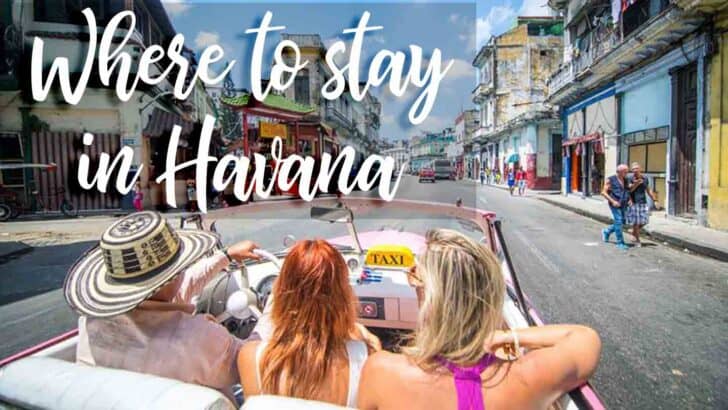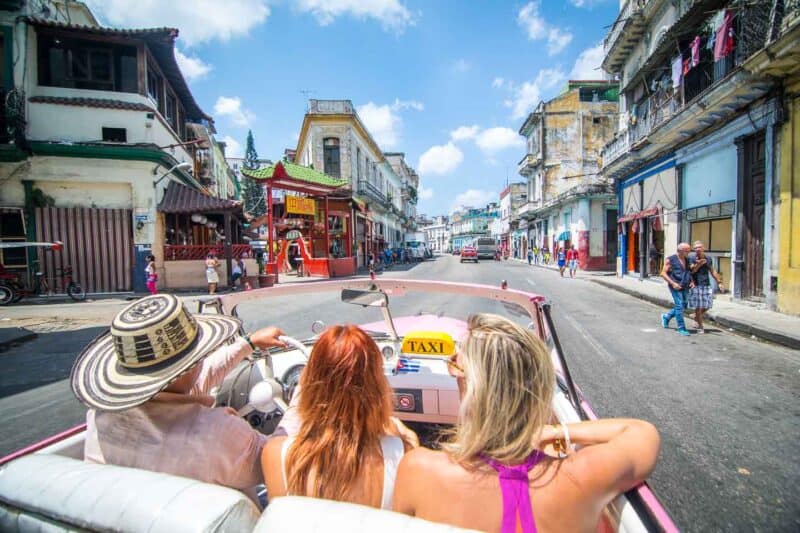The balmy air smells slightly of salt. The Baroque-style colonial buildings dazzle with their architecture. Lush tropical foliage thrives in the many city parks. Music wafts from cafes and pedestrianized streets.
Classic American cars from the 1950s cruise by the multicolored buildings. You’re in Havana, Cuba’s lively, friendly capital city.
Havana is a unique city in many ways. Time seems to have stopped in the late 50s in many parts of the city. The crumbling colonial buildings, art-deco architecture, and department stores with 1950s trappings give the city an air of faded glory.
But looks are deceiving. Havana is anything but faded. It is vibrant, bursting with color, music, art, achingly beautiful architecture, and loads of Cuban charm.
I fell in love with Havana in a very short time. That’s why I want to share with you some tips and advice to help you make the most of your visit to this remarkable city and where to stay in Havana.
Guest Post by Talek, from Travels With Talek, author bio below.
*When looking for the best price and biggest selection of hotels in Havana, check prices on Hotels.com. We’ve found they are the best option and have a great cancelation policy.
Where To Stay In Havana Neighborhood Guide
The best way into the center of Havana from Jose Marti International Airport is by taxi, which should not cost more than 20-30 CUC. A CUC is roughly equal to a US$.
The ideal places to stay in Havana are called “Casas particulares” or “private homes.” These are homestays or Vrbo accommodations offered by Cuban families under a government-approved system of private enterprise.
The average price for a one-night stay in a typical casa is 30 CUC, but it can go as low as 10 CUC for a shared room or as high as hundreds of CUC for a mansion with a pool in one of the leafy suburbs on the western side of the city. Casas are found all over Cuba, with the greatest concentration in big cities like Havana and Trinidad.
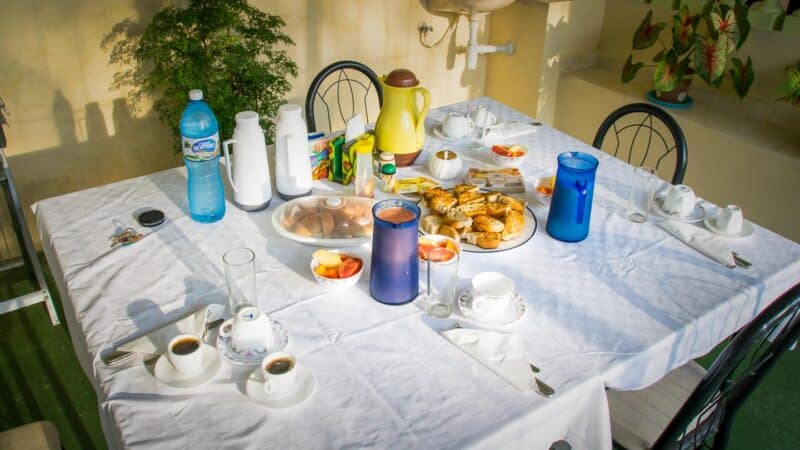
The big advantage of staying in a casa is that you get to interact with a real, honest-to-goodness Cuban family. You can hang out on their terrace or living room and watch Cuban TV, eat delicious authentic Cuban food – can’t beat breakfast for 5 CUC – and get valuable travel tips from the hostess (usually a woman).
Your stay at a Cuban casa can very well be one of the highlights of your visit. I’ve used Vrbo for stays in Havana, but there are several other homestay sites.
Editor tip: The biggest advantage to Havana Vrbo’s is that it’s paid in advance online. When planning a trip to Cuba, you have to really determine how much cash to bring since ATM machines don’t work for US bank cards. When we were deciding where to stay in Havana, we went the Vrbo route for the first two nights, as we didn’t want to have to look for a place right when we arrived.
But what part of the city should you book your casa? There are three main sections of Havana that are especially interesting for visitors: Habana Vieja or Old Havana, Centro Habana, and Vedado.
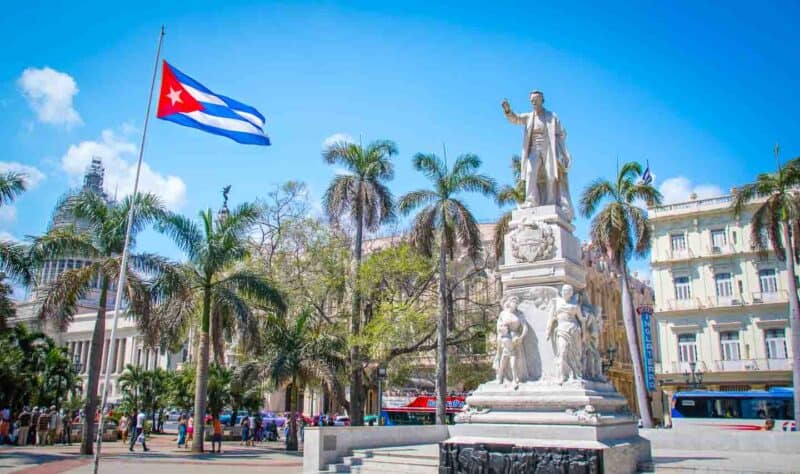
Habana Vieja
The most well-known and iconic neighborhood in Havana is Habana Vieja. This is the colonial heart of the city with stunning architecture, open-air plazas, unique museums, and so much more. This area contains perhaps the largest concentration of interesting sites in the city.
A can’t miss Havana attraction in this part of town is a visit to the four main plazas or squares. These are Plaza de la Catedral, Plaza de San Francisco, Plaza Vieja, and Plaza de Armas. The best way to experience Habana Vieja’s colonial flavor is to walk from one plaza to the other until you’ve visited all four. This trajectory will take you through the busiest and most interesting colonial streets, churches, shops, and restaurants in the area.
Plaza de la Catedral is where you’ll find Havana’s iconic Baroque-style cathedral, completed in 1777. The cathedral stands majestically in the center of a wide plaza surrounded by imposing colonial structures and arches dating from an even older period.
Off one of the streets leading from the plaza is one of Ernest Hemingway’s former haunts, “La Bodeguita del Medio,” where, rumor has it, the mojito was invented. Off another street is the private enterprise restaurant or “paladar” called Dona Eutemia. The food in this paladar is great, but it is hard to score a table.
Tip: come at an off time, like 2 pm, to increase your chances of getting a table and enjoying their authentic Cuban cuisine.
At Plaza de Armas, you’ll find the “Museo de la Ciudad” or museum of the city. This is an excellent collection of Havana-related artifacts dating from colonial times to the present. The museum is housed in a former colonial government building with a classic Spanish-style inner patio, which is as impressive as the collection. The plaza itself is probably the most beautiful, with its thick foliage, majestic Cuban palm trees, and interesting statuary. It also hosts an antique market.
Plaza Vieja is party central any time of day. This renovated square is ringed with many lively restaurants, all of which have talented musicians playing classic and modern tunes. Nighttime is especially active and great for people-watching while sipping one of the excellent local beers. The center of the plaza is usually reserved for exhibits of contemporary Cuban art.
Plaza de San Francisco is next to Havana’s harbor and boasts a colonial church-turned-museum, decorative fountains, quirky art galleries, and many high-end restaurants.
If you are a fan of museums, don’t miss the Cuban art wing of the Museo de Arte Contemporaneo or the Museum of Contemporary Art nearby.
Other tried and true paladars in the area include “Paladar de Mercaderes” and “O’Reilly’s,” a little touristy but a lot of fun with good music and strong drinks.
Related Article: The Best Things To Do In Cuba
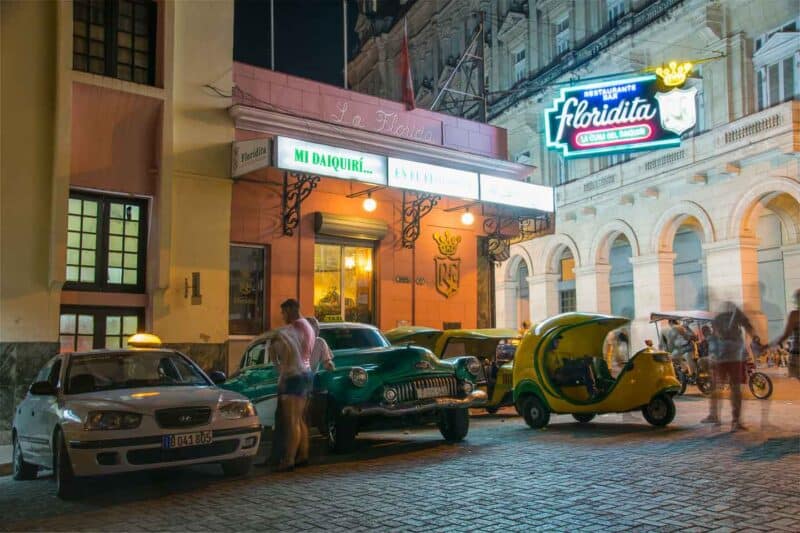
Centro Habana
Your next best option for where to stay is in the Centro Habana neighborhood. This neighborhood borders the Malecon, the Havana seawall, on one side. This is another must-see, iconic Havana location.
Commonly referred to as Havana’s living room, the Malecon is where the citizens of Havana pour out in the evenings to enjoy the ocean breeze, meet, share a bottle of smooth Cuban rum, and play music. Don’t be surprised if a spontaneous dance party erupts while you are there and you are swept away by the infectious rhythms.
Centro Habana is where you will find the capital, modeled after the capitol building in Washington, D.C. The area behind the capital was once crumbling, dark and unattractive. Recent renovation efforts have turned this area into a brightly lit neighborhood full of lively bars, restaurants, and art galleries.
Also in Centro Habana is the Partagas cigar museum, where you can tour the cigar-making factory and try some of the finest cigars in the world. Nearby is the original Sloppy Joe’s, serving great hamburgers, and is reputed to have the world’s longest bar.
Next to the capital is the National Theater, where you can sometimes score tickets to the ballet or symphony at very reasonable prices. You can rent a classic American car from the lot in front of the theater and drive around Havana in decadent luxury for 30 CUC/hour.
Here, you can also catch the double-decker Hop-On-Hop-Off bus that, for 10 CUC, will take you all over Centro Habana and El Vedado to places you are unlikely to see otherwise.
Tip: If you sit on the top layer of the bus without protection from the sun, you will roast, so take precautions: hat, sunscreen, sunglasses!
On this route, you will see the Plaza de la Revolucion, 5th Avenue, with its stunning mansions, most of which are now embassies, and the beautifully renovated hotels that face the ocean. Another one of these buses will take you to the fabled “Playas del Este” or Eastern Beaches, where you can spend the day exploring what is generally considered one of the most beautiful beaches in the world, drinking mojitos and eating fried fish.
This area has some of the best paladares in Havana. Two IG-worthy gems that you will be raving about for years are “La Guarida,” perhaps the most photographed paladar in Havana, and “San Cristobal” where President Barack Obama had lunch during his historic visit to Havana. And yes, it’s that good!
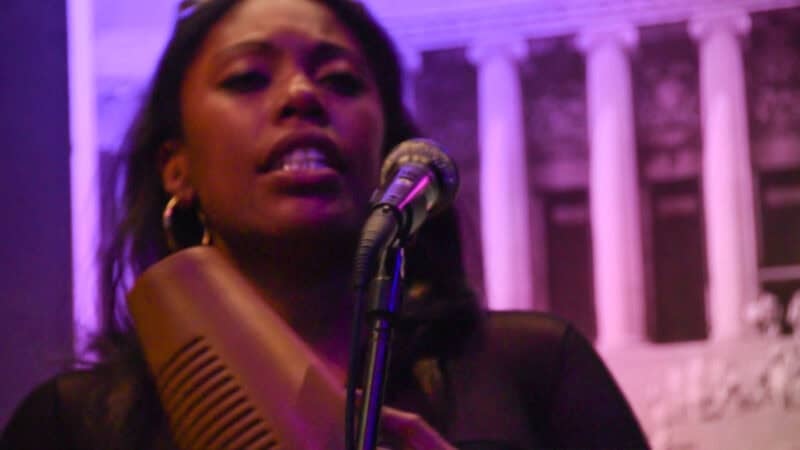
For a taste of the legendary, sizzling Havana nightlife and some of the best jazz around, make sure to visit “La Zorra y el Cuervo” (The Fox and the Raven), Havana’s hottest jazz club. Nearby is “El Gato Tuerto” (The One-eyed Cat), a popular nightclub.
Tip: These places open late and party till the wee hours. You may want to take a nap during the hot Havana afternoon in order to maximize the nightlife.
A truly unique experience in this neighborhood is a visit to Callejon de Hamel or Hamel’s Alley. At 12 p.m. every Sunday, the Alley hosts a Santeria show. Santeria is the Afro-Cuban religion that remains popular in Cuba today. The show includes dancing, music, and choreographed performances.
Tip: Get there early to get a good view. It gets really crowded.
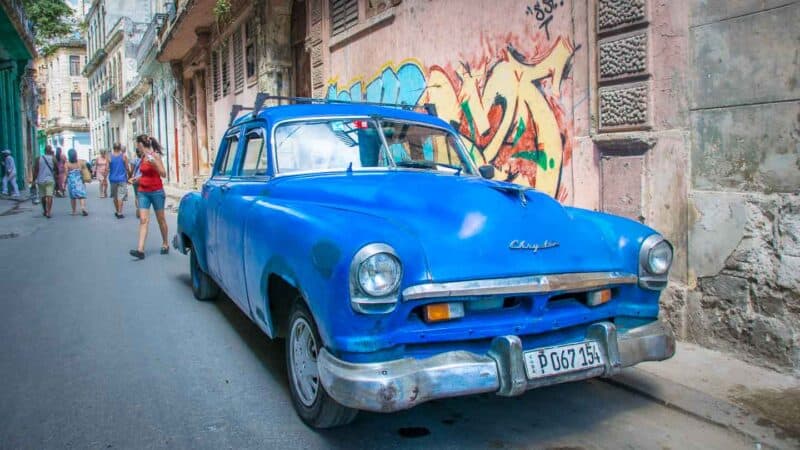
El Vedado
El Vedado is an upscale neighborhood to the west of Centro Habana. This was the pre-revolution luxury area, and it still presents as an elegant, sophisticated enclave of well-maintained mansions and landscaped gardens. Accommodations here are the costliest but can be spectacular with pools, BBQ, and gracious, leafy patios. One option to afford such an accommodation is to gather a group of friends and rent a full house.
Besides the beautiful architecture and wide, pleasant avenues of El Vedado, another big draw here is some of the best paladares in Havana. Among these are “Atelier” and “La Galeria,” both housed in renovated mansions decorated with antiques. The eclectic menu changes daily at Atelier.
The highlight of El Vedado is the “Fabrica de Arte Cubano (FAC),” or the Factory of Cuban Art, which Tony Bourdain reported on when he visited Havana. There is nothing like this anywhere in the world.
It’s even difficult to describe the F.A.C. since there is no frame of reference for anyone to imagine. The F.A.C. is a cultural venue housed in a renovated cooking oil factory. Inside there are three levels and a multitude of rooms. Some rooms display contemporary art exhibits. Other larger rooms feature dance performances and cinema.
Turn a corner, and you can encounter a bar offering tasty snacks. Another bar serves drinks poured from a conveyor belt, swinging bottles of rum high above the counter. There may be a poetry reading in one alcove or a group of musicians performing salsa or jazz in another.
Frequently, the patrons can burst into impromptu dancing, and everyone joins in. The upper floors have art galleries and formal dining. One wonders the rooms, mojito in hand, delighted at every turn. No money is exchanged at the F.A.C. You are given a card, and whenever you purchase something, it is checked. When you leave, you hand over your card and pay.
The F.A.C. is attached to a restaurant called “El Cocinero,” the brand name of the cooking oil that was once produced in the former oil factory. The restaurant is also outstanding. The combination of the F.A.C. and the attached restaurant can make for a perfect Havana night.
Tip: The F.A.C. is closed some weeknights. Check before going. Doors open at 8 p.m. There is a long queue to get in, so come early and prepare to wait. It’s worth every minute of your wait.
Have you been to Havana? Where did you stay in Havana?
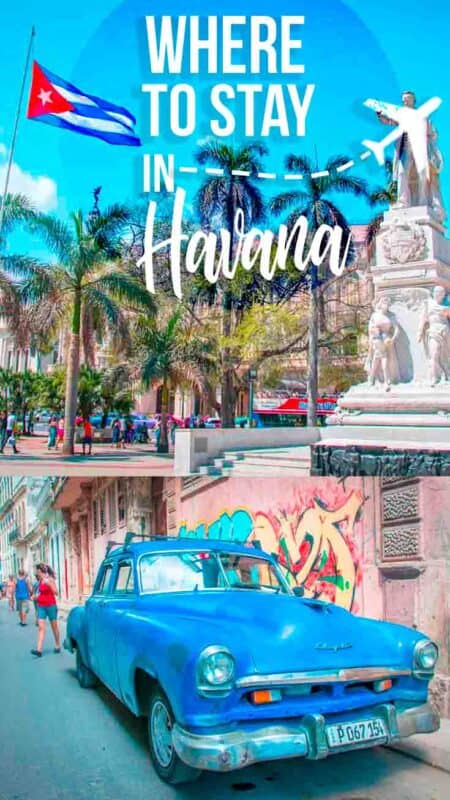
Author bio: Talek Nantes is an author, travel consultant, and founder of the travel blog www.travelswithtalek.com. She is a passionate travel enthusiast and enjoys sharing her travel experiences with others. In her blog, Talek shares information on unique destinations and provides actionable travel tips and advice to help travelers make the most of their time away from home. Her focus is on cultural immersion and interaction with local people to help travelers create their own unique travel experiences. Her work has appeared in several publications.
Talek’s personal and professional background has led her to travel to over 100 countries. She has lived and worked throughout the world and speaks several languages. Talek is a graduate of the University of Pennsylvania and lives with her husband in New York City and Miami.
